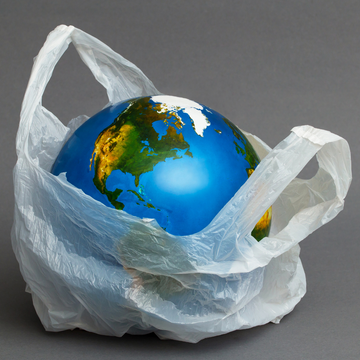In the ever-evolving world of fashion, bags have become more than just accessories; they are statements of personal style and identity. However, the rapid pace of the fast fashion industry has a significant impact on the environment, especially when it comes to the production and disposal of bags.
This blog aims to shed light on the critical intersection of bags, fast fashion, and climate change, providing insights for conscious consumer choices.
The Environmental Toll of Fast Fashion :

Fast fashion, characterized by quick production cycles and low-cost garments, has a substantial ecological footprint. The materials commonly used in bag production, such as polyester and nylon, are derived from non-renewable resources like petroleum.
The extraction and processing of these materials contribute to pollution and resource depletion, exacerbating climate change. The disposal of old bags further compounds the issue, as synthetic materials take a long time to break down in landfills.
Choosing Sustainable Materials :

To address the environmental impact of bags, consumers can make more sustainable choices. Opting for bags made from eco-friendly materials such as organic cotton, hemp, or recycled fabrics is a step in the right direction. These alternatives not only reduce the demand for virgin resources but also minimize pollution during the manufacturing process.
Supporting brands that prioritize sustainability and eco-friendly practices is crucial for fostering positive change in the fashion industry. By selecting bags made from these materials, consumers contribute to a more sustainable and responsible fashion landscape.
The Lifecycle of a Bag :
Understanding the lifecycle of a bag is essential for assessing its environmental impact comprehensively. From the extraction of raw materials to production, transportation, and disposal, each stage of a bag's life cycle has implications for climate change. Consumers can make a difference by choosing bags with a focus on durability and longevity.
Longer-lasting bags reduce the need for frequent replacements, thereby lowering overall resource consumption. Additionally, considering the environmental impact at every stage of a bag's life encourages a more responsible approach to fashion consumption.
Conclusion :
In the fast fashion landscape, consumer choices play a pivotal role in shaping the industry's impact on the environment. By prioritizing bags made from sustainable materials and supporting brands committed to eco-friendly practices, individuals can contribute to a more responsible and climate-conscious fashion culture.
Considering the durability and life cycle of a bag allows consumers to make informed decisions, fostering a collective movement towards a more sustainable future.
Frequently Asked Questions (FAQs) :
Are all synthetic materials bad for the environment?
While many synthetic materials have negative environmental impacts, technological advancements have led to the development of eco-friendly alternatives. Look for bags made from recycled synthetics or innovative materials designed with sustainability in mind.
How can I dispose of my old bags responsibly?
Instead of discarding bags in landfills, explore recycling programs in your area. Many brands also offer take-back initiatives, repurposing old bags or ensuring they are disposed of in an environmentally friendly manner.
Is it more expensive to choose sustainable bags?
While some sustainable bags may have a higher upfront cost, they often prove to be more economical in the long run due to their durability. Investing in quality, timeless pieces reduces the need for frequent replacements, ultimately saving money and valuable resources. Sustainable choices are not just good for the planet; they can also be cost-effective over time.







